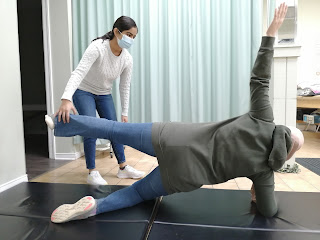Yoga vs Pilates, maybe Taichi or more?
Most likely you have heard about these two exercises, Yoga and Pilates. Have you found out what the differences are between these two common and popular exercises? We often encounter the question "which is better" in our practice. The answer is not very straight forward. It depends on what the goal of the exercise is. One type of exercise usually does not meet all of our needs. Cross training among different types of exercises, including Taichi, walking, Zumba or lifting weights, will ensure our body becomes more balanced and improves in all areas of exercise components, such as strength, flexibility, endurance, balance and cardiovascular health.
The simple explanation of the difference between yoga and pilates would be that yoga is focused on more stretching/flexibility and pilates is focused on more core strengthening. We definitely need both of stretching and strengthening to achieve optimal physical health. On top of those, range of motion exercise is also important to improve our body circulation and it can be achieved by Taichi, in which movements include the entire body. That is probably better than walking in terms of how many joints are moving during the exercise. Just to add in another comparison of exercises between Taichi and walking.
If we want to further improve our cardiovascular health, we need to speed up our heart rate to submaximal heart rate level. Maximal heart rate can be calculated by 220 - age. If you are 40 years old, your maximal heart rate would be 220 - 40, which is 180 beats/minute. The submaximal heart rate would be 60% to 80% of 180 beats/minute, which works out to be 108 to 144 beats/minute. To train at a submaximal level for 15 to 20 minutes a day is recommended to achieve optimal cardiovascular health.
We can speed up our heart rate from various exercises, like swimming, biking, brisk walking, jogging or simply just repeating laying down on the floor and getting up to standing position as fast as you could. How to choose a right cardiovascular exercise for you will depend on your fitness level. Some people might have pain from walking or running so we will choose lower impact exercise for them. Some people are sitting all day for work so biking might not be the best form of exercise for them; we need them to use their lower body muscles more.
With the increased circulation, cardiovascular exercises also benefit our muscles, other soft tissues, organs and joints as well. Stretching after cardiovascular exercise is the most ideal to lengthen a tight structure as the muscle is warm and most responsive. It is better than warming up the muscle from outside like using a hot pack or shower. An ideal generic conditioning exercise routine covering all components of exercises would be: slow walking/cardio 5-10 minutes, followed by resistance training, followed by cardiovascular exercise at submax level for 20-30 minutes, followed by stretching. Of course, a physiotherapist will assess and plan the details of the routine with you. Then you can add on Yoga, Pilates, other exercise classes or sports on top of your personalized regular conditioning program.
How was that for an answer to the question, is Yoga or Pilates better? This blog was a long answer to a short question but with lots of useful information. Hope we did not lose you! Give us a shout if you have further questions!





Comments
Post a Comment